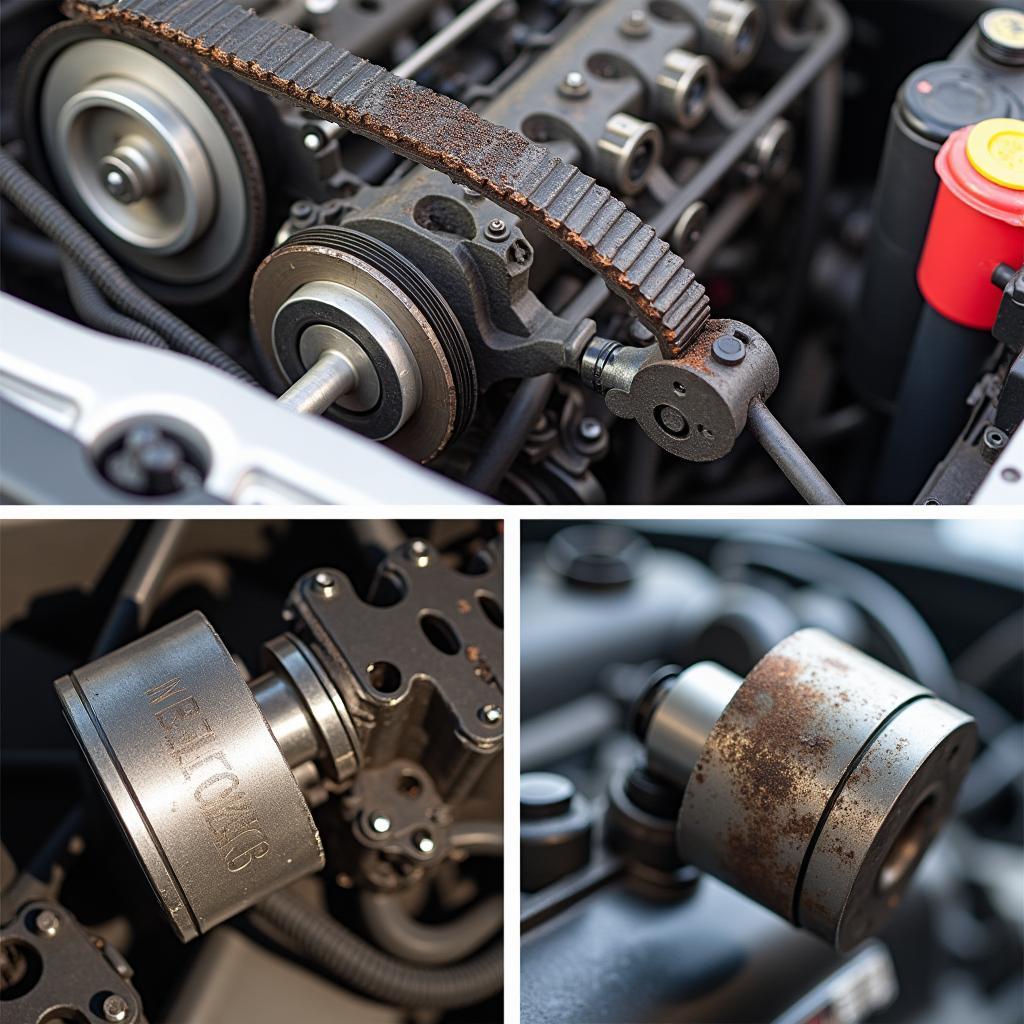When does the timing belt need to be replaced? This is a question many drivers have. Timing belt replacement is a crucial maintenance point that should not be ignored to avoid costly engine damage. In this article, you’ll find all the essential information about timing belt replacement, covering intervals, costs, and the consequences of a broken belt.
The Importance of Timing Belt Replacement
The timing belt synchronizes the movement of the crankshaft and camshaft, ensuring that the valves open and close at the correct moment. Smooth interaction between these components is essential for engine performance and fuel consumption. A defective or broken timing belt can lead to severe engine damage, often requiring an expensive replacement of the entire engine. This is why timely timing belt replacement is so important. “A functional timing belt is the heart of every internal combustion engine,” says renowned automotive expert Dr. Hans Müller in his book “Modern Engine Technology.”
Timing Belt Replacement Intervals: Years or Kilometers?
Timing belt replacement intervals vary from manufacturer to manufacturer and model to model. They are typically specified in both years and kilometers. The value that is reached first applies. For example, an interval of 5 years or 120,000 km can mean that the timing belt must be replaced after 5 years at the latest, even if only 80,000 km have been driven. Conversely, the timing belt must also be replaced at a mileage of 120,000 km, even if the vehicle is only 4 years old.
Consequences of a Broken Timing Belt
A broken timing belt can have catastrophic consequences for the engine. In most cases, it results in what is known as “engine damage,” as the valves collide with the pistons. This leads to bent valves, damaged pistons, and possibly even a cracked cylinder head. Repair costs can quickly run into several thousand Euros.
 Broken timing belt and engine damage
Broken timing belt and engine damage
The Cost of Timing Belt Replacement
The cost of a timing belt replacement varies depending on the vehicle model and workshop. On average, costs range between 400 and 800 Euros. The cost of the timing belt itself is relatively low. The majority of the cost is labor, as replacing the timing belt requires significant effort. Often, the tensioner pulley and water pump are also replaced at the same time, as these parts are also subject to wear and tear. “A proactive timing belt replacement is always cheaper than engine damage,” emphasizes engineer Franziska Schmidt, an expert in vehicle maintenance.
Timing Belt Replacement: DIY or Professional Service?
Timing belt replacement is a complex task that requires in-depth knowledge of vehicle technology. Therefore, in most cases, it is advisable to have the timing belt replaced in a professional workshop. However, for experienced hobby mechanics, the replacement is certainly doable with the right tools and detailed instructions.
 Tools for DIY timing belt replacement
Tools for DIY timing belt replacement
Frequently Asked Questions About Timing Belt Replacement
- How often does the timing belt need to be replaced? The replacement intervals are specified in your vehicle’s service manual.
- What are the signs of a defective timing belt? Unusual noises from the engine compartment, loss of power, or starting problems can indicate a defective timing belt.
- Can I continue driving with a defective timing belt? No, if you suspect a defective timing belt, the vehicle should not be driven further.
Related Topics
- Maintenance intervals for your car
- Avoiding engine damage
- Car repair costs
Need Help?
Contact us at autorepairaid.com. Our automotive experts are available 24/7 and will be happy to assist you.
Conclusion
Timing belt replacement is an important maintenance measure that should not be neglected. Timely replacement protects against expensive engine damage and ensures reliable operation of your vehicle. Find out about the replacement intervals for your vehicle model and have the timing belt replaced promptly in a professional workshop.

